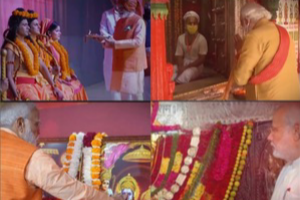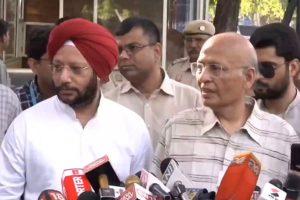The basic problem facing the news media, specially the TV, today is the disproportionate expense on distribution and carriage fees of channels.
Hence, there is decidedly low investment in content and the variety of the same. Almost all channels then resort to studio talks rather than much of field-work. This also results in limited courage in content and prevalence of subdued voice of many channels.
Size of the television news business is around Rs 3,000 crore, which is less than five percent of the gross 70,000 crore advertising revenue in India, and hence the frontiers are still open on revenue side.
Even in digital news, profit sighting and traffic rise are rare and far in between. In spite of the news portals already earning profits, Indian consumer is still not ready for the subscription and Paywall route to revenue generation in digital news.
Television and its digital avatars are both caught up in the debate between speed news and enterprise content. Original curated personalised content is must in the digital medium, and hence the adaptation of journalists to digital content generation techniques becomes crucial.
Journalism in myriad forms is being consumed more and democracy is being served better with reach of news becoming stronger and wider. Though, in a clutter of news-platforms, credibility is going to be the discerning factor. The worrying factor at times is that by-lines are increasingly known less for the news they speak but for stands they take.
There is the rise of branded anchors, living in their bubbles and echo-chambers, and TV often presents less news, and much more views. Branded anchors have defined their specific audiences, and proud of their stand of socialism or communalism and less of their journalism. Alternatively, social media has created some pressures on TV to stand firm.
The artificially created conflicts through studio guests and journalism are signs of decay in healthy news presentation, though these serve the twin purposes of reducing costs and strengthening biases and stereotypes.
Going beyond personal stands of anchors and editors, and more so media business houses, there are told and untold pressures from powers that be.
Story-telling on India is often coloured as patriotic and non-patriotic. Patriotism is not a virtue of journalism, but keeping news sacrosanct is.
Media mediates social change, and media self-corrects with time. People do go back to credible news. Indian news media should be thinking about what they are doing to themselves for TRPs, viewership and being in the good books of powers that be.
A bigger challenge, while audiences are coming to TV or re-iteration or reaffirmation of their already existing world view, they take to digital media for breaking news, but revenue is still abysmally low in the digital which is the cause of real worry. With higher revenues on the digital medium, there will be more corrections in the overall contours of news-dissemination in India.
The new definition of DTH is Direct to Handset — so mobile journalism (MOJO) and skills of MOJO journalists are the order of tomorrow. The future is of further integrated newsroom along with staff doubling up on TV and digital fronts, selfie-stick reporters shooting themselves and publishing simultaneously will be the new normal.
In brief, multi-skilled convergent techno-savvy mobile journalists with a great network and way with languages shall be the most sought after animal in the world of news of tomorrow.
Technology penetration will emerge as the game-changer ahead. Broadband penetration across 600 districts and gradually 6.3 lakh villages will make the medium influencing the message.
Social media will fill in where the mainstream media fail and with broadband going to every corner this will be further accelerated.
Also, specialised content, as in business or ecology or defence, for specific niche audiences will find market and revenue talking to their right audiences.
Digital is being reborn in India almost every day with 845 million cell phone users, half of them being active on Internet and social media with smartphones.
Transition to the digital world ahead will be more through Artificial Intelligence, Augmented Reality ad Virtual Reality, which will add visual and conceptual diversity on one hand, and may also create stories and visuals which do not actually exist and pass them off as news.
Indeed, journalists can take you to the spot of an event through VR and add layers to it through AR. Facts and fiction distinction may to an extent get obliterated.
Since people are consuming a specific news platform more through the social media like Twitter, Youtube and Facebook, and less through their portals, creating viral news through AR/VR becomes a reality of the future. This is more so as video capable devices are on the rise, and are expected to grow more than twice between 2016 and 2020.
Even today, daily online video watchers are 33 per cent of the total Internet users in India. And among these viewers, women outnumber men and Hindi outnumbers all other languages taken together.
Increasingly, the shorter hand-held screen is for snacking news or watching trailer of the news, while the larger screen on TV is for more detailed presentation. Come 2020 — content will still remain the king, though contexts and platforms shall change.
The writer is school head, School of Media, Pearl Academy











